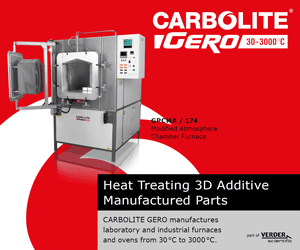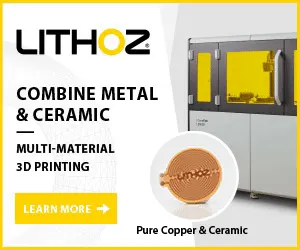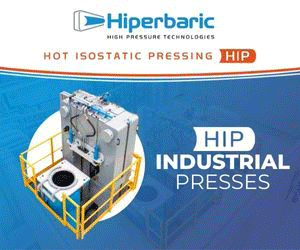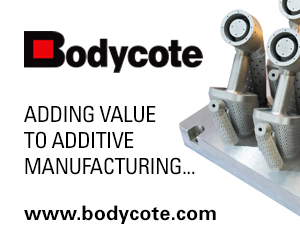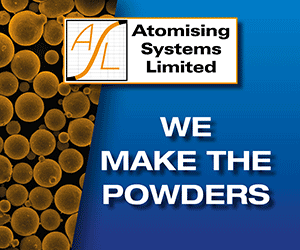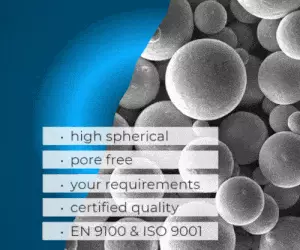Metal Additive Manufacturing, Vol. 8 No. 3 Autumn 2022
Prefer a PDF download? Click here
In addition to the latest industry news, this 228-page issue of Metal Additive Manufacturing magazine includes the following exclusive features:
Revolution, not evolution: General Motors on building an AM culture and the AM Dream Machine
For Additive Manufacturing to succeed in the volume production of components for the mainstream automotive industry, it will not only require the creation of an effective AM culture within automotive producers, but also a radical re-evaluation of what different industries need from AM machine manufacturers.
Jeff Kerns visited GM’s Additive Industrialization Center (AIC), in Warren, Michigan, USA, for Metal AM magazine and spoke at length with the centre’s team about its role in the exploration of AM for automotive, and how new machine designs will increase AM’s success in the automotive industry.
| Get PDF | | | Read online |
The power of Additive Manufacturing in the hands of artists: Public works to small batch production
The importance of, and connections between, the arts and Additive Manufacturing can be unclear. For AM, the greatest challenge is managing and capitalising upon the growing awareness of its role in industry and its impact on society and daily life. Major public works, like the MX3D bridge in Amsterdam, do more to shift public perception of the possibilities AM offers, than any number of industrial successes.
Elizabeth Henry, principal and founder of Henry General Strategies, explores the relationship between the world of the arts and the state of the AM industry, and ponders what benefits can be found when the two are brought together.
| Get PDF | | | Read online |
Growing momentum and broadening recognition: A status update on the rise of Electron Beam PBF
In the Summer 2020 issue of Metal AM magazine, Joseph Kowen presented a snapshot of the Electron Beam Powder Bed Fusion industry. The conclusion was that the full potential of the technology was, as yet, unrealised, and that PBF-EB had considerably more promise than the level of commercial activity seemed to suggest.
Two years later, Kowen returns to the topic to offer an update on the progress of the PBF-EB field over the intervening period. He assesses the growing level of activity to provide an updated estimate on where the technology, and its commercialisation, is headed.
| Get PDF | | | Read online |
Improving carbon capture efficiency through Additive Manufacturing in the race for a liveable climate
An important technology in the fight against climate change is carbon capture, able to separate CO2 from the air and convert it into useful products.
To ensure that they do not add to the problem they are designed to address, carbon capture systems must operate at extreme efficiency, and require a complex system of heat exchangers, condensers, gas separators, and compressors, ideally suited to metal Additive Manufacturing.
Scott Green and Dakota Black, 3D Systems, Matthew Atwood, AirCapture LLC, and Christopher L Douglas, University of Oxford, demonstrate how carbon capture efficiency can be improved through AM.
| Get PDF | | | Read online |
The System of AM Systems: How Metal Powder Works’ in-process powder production could change metal AM
Many in the Additive Manufacturing industry have spoken on the importance of taking a holistic view of the workflow, from powder production to part finishing. Viewing the workflow in this way enables a systems engineering approach, joining the complex machines and processes involved in AM together. But what if we were able to combine steps from across the AM workflow? What cost, time and safety improvements might that enable?
John Barnes presents his DirectPowder™ process, developed in partnership with Christopher Aldridge.
| Get PDF | | | Read online |
The next generation: Using metal AM to drive emissions reduction and educate the engineers of the future
Metal Additive Manufacturing is a foundational technology for power generation, supporting the prototyping, testing, and design of gas turbines, as well as opportunities in repair and new components. The technology’s future is also dependent on educating a new generation of engineers.
Ohio State University’s Center for Design and Manufacturing Excellence (CDME), leading efforts to mature AM through the formation of an ecosystem of partners, has formed a collaboration with Siemens Energy and Engie to explore these topics and provide its students with experiential learning in metal AM.
| Get PDF | | | Read online |
Advances in the AM of refractory metals and hard materials at the 20th Plansee Seminar
As Additive Manufacturing sees growing use in a broader range of industries, researchers have been increasingly focused on expanding the types of material that can be processed via this technology, including the challenging field of refractory metals and hard materials.
The AM research featured in the programme of the recently held Plansee Seminar represents the cutting edge of what is possible with these materials using the most advanced manufacturing processes. Here,
Bernard North collates the seminar’s takeaways on the suitability of these materials for direct Additive Manufacturing processes.
| Get PDF | | | Read online |
Additive Manufacturing needs you: Why you and your company should get involved in standards development
The development and communication of standards is vital to building customer confidence and trust in Additive Manufacturing, and it is only by building that trust that the industry can advance its adoption across a wider range of markets and applications.
In this article, Khalid Rafi, ASTM International, and Shane Collins, Wohlers Associates, highlight the importance of standards, outline the standards development process, and explain why individuals employed within the AM industry should seek to involve themselves in this process.
| Get PDF | | | Read online |






